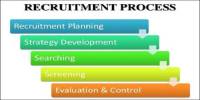Performance Management began around 60 years ago as a source of income justification and was used to determine an employees wage based on performance. Organizations used Performance Management to drive behaviours from the employees to get specific outcomes. In practice this worked well for certain employees who were solely driven by financial rewards. However, where employees were driven by learning and development of their skills, it failed miserably. The gap between justification of pay and the development of skills and knowledge became a huge problem in the use of Performance Management.
Managing employee performance is one of the key drivers for organizational success in the present context of firms trying to adopt a resource centered view of the organizational. We have seen elsewhere that integrating HRM practices with those of organizational goals and strategy increases the competitive advantages for the firm. Similarly, managing employee performance within the larger framework of organizational goals is critical for organizations that count people among their key assets
The Role of the Manager
The manager has a duty to ensure that his or her management of the employees is free of biases and prejudices. It’s been the case across industries and verticals where the employees feel discriminated against leading to attrition, lower employee morale and in the extreme cases, lawsuits against the company. Hence, the manager has to “walk the talk” and not simply pay lip service to the company’s policies on employee performance. During the course of working together as a team, there are bound to be instances where friction between the manager and the team and within the team manifests itself.
The Role of the Employee
The above section looked at the role of the manager. The manager has a duty to manage the team effectively and so does the employee have corresponding responsibilities as well. Absenteeism, Shirking Work, A negative attitude and a blasé approach to work are some things that the employee must avoid. It is helpful to the employee to know that once he or she is categorized as having an attitude problem, then it would be difficult for the employee to break the perception and perform effectively. This does not mean that the employee has to take whatever comes his or her way.
Organizational Focus
Though the role of the HR manager and the organization seems to be relatively small, it is a fact that organizational goals and culture play a very important part in ensuring that employee performance is managed to the benefit of the organization. Most of us have read about or heard the benefits of working for MNC’s (Multinational Companies) in India. The reason why they are highly talked about is the perception among potential and aspiring employees that these companies treat their people well.
Conclusion
We have seen the centrality of managing employee performance to the success of the organization. If organizations want to cut down on attrition and boost sagging employee morale, the first thing they can do is to ensure that the employee performance management system is streamlined.
















